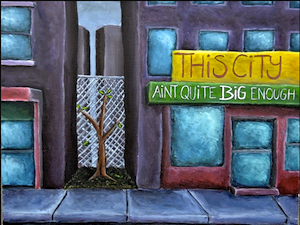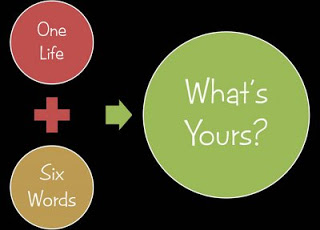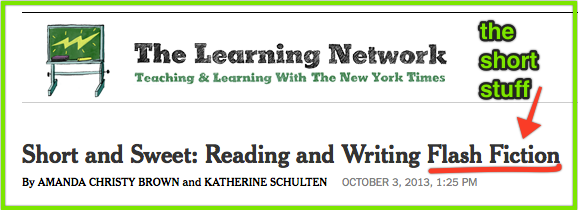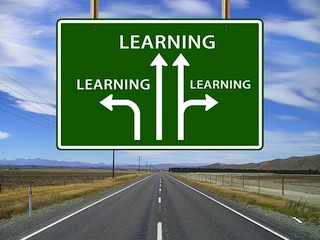Reengage Your Readers with Digital Microstories

This collaborative blog post was written with help from friend and colleague Danielle Hardt of Starpoint Middle School in Lockport, NY. Danielle is a literacy rock star, a highly effective teacher, and a secret practical joke enthusiast (a skill I highly prize!).
It has become the rage of late to “close read” everything in America’s Common Core classrooms. Almost all of the states that are providing curriculum resources (including NY) and many of the vendors that are selling Common Core aligned products are focusing on close reading as an essential strategy in their materials. Frankly, they are overusing an instructional methodology to the point of killing the love of reading.
Our students are noticing this too, and some of them are beginning to share their pain. As far back as the cave classroom, students have been our most important sounding board, as well as our primary obligation. We need to listen to them.
In an effort to bring a little love back to literacy (note the alliteration), we’d like to suggest adding some brevity, levity and “webvity” to instructional processes through the the use of digital microstories. They’re not a total substitute for other forms of close reading (although they will promote it), but what a welcome break.
This avenue of instruction taps into a medium of composition students are very comfortable with. Using digital formats fosters engagement and efficiency and proficiency in the classroom, as many students either use these tools already or require limited explanation of their usage.
If you have a touch of technophobia, never fear. In many modern classrooms, students are educating us as teachers about the easiest ways to utilize the technology. When this happy collaboration occurs, the learning skyrockets! We are all partners in learning.
The instant gratification of micro-literature

Besides just sheer engagement, another attribute of this format is the instant gratification for students to complete and “turn in” an assignment in one class period or block. What middle schooler doesn’t love to hear or weave a tale about the hero/heroine that escapes a torturous conflict, barely rising to the top? Perhaps a midnight terror that shivers the spine? Maybe they’d delve into a short poem or riddle or other clever play on words.
Any which way, digital microstory formats include these and many other options as writers around the world concisely demonstrate critical thinking – focusing on evaluation and synthesis without the rigmarole of days of analysis or the constant revisiting of text for the sake of answering what amounts to a bunch of comprehension questions.
Allowing students the opportunity to choose dramatic and engaging topics, and approaching them through visualization within these digital formats, create a natural connection to inferencing. A relationship with close reading happens organically, rather than through a need for direct instruction. This organic and authentic version of close reading hits the heart of the way we analyze details and extend the learning beyond anything we could have imagined in traditional ways of teaching. It also extends opportunities for further discussion and reflection.
So where do we find these micro-materials?

Here are some of our favorite sources:
Six Word Stories:
http://www.sixwordstories.net/
http://www.narrativemagazine.com/sixwords
http://www.sixwordmemoirs.com/(not fiction, but full of possibility!)
Visualizing Famous Quotes: Make a webtool visualization of your favorite quote! (Search Google Images for examples, e.g., Dr. Seuss quotes.)
Two sentence horror stories:
http://www.mandatory.com/2014/02/21/20-terrifying-two-sentence-horror-stories/
Very short stories:
http://www.wired.com/wired/archive/14.11/sixwords.html
Extremely Short Stories:
http://extremelyshortstories.wordpress.com/
“Tweet the gist:”
Note that these tweets might be physical, in-class experiences, rather than an online tweet. Just keep them to 140 characters!
- Tweet the plot of a favorite movie.
- Tweet the central idea of a favorite song.
- Tweet the main idea of a favorite poem.
- Tweet your book report. (Romeo & Juliet: Kids sneak around, get married, die. Young love can be tragic if you don’t check for a pulse, dude!)
- Then, “Instagram” the tweet: What visual would enhance the tweeted message?
Common Core connections
There are several important task-specific functions that go along with digital microstories, primary among them are analysis of text and students eventually writing their own versions rather than always analyzing someone else’s writing.
Both of these tasks are aligned to Common Core standards for Key Ideas and Details (Anchor standards 1-3), in all grade levels in the reading standards and the first six writing standards around text types and production of writing. Additionally, because students are adding a visual component, they are also engaging reading standard 7 around the integration and evaluation of diverse media formats.
So how do we do this with students?
Now that we’ve defined the “What,” let’s take a look at the “How.”
There are many web tools available for creating visualizations of text, merging multiple types of media, and developing digital representations of thinking. For this particular instructional activity scenario, we’re looking for tools that support the goal of brevity.
Tools that let us create short, quick media productions will be the most useful for digital microstories and promote the opportunities for instant classroom gratification and analysis…and assessment…and engagement.
Here is a sampling of tools – both cloud-based and device-based applications – that we think would be extremely useful for digital micro-storytelling:
- Animoto
- Prezi
- iMovie / Moviemaker
- Storybird
- ToonDoo / Comic Life
- Pic Collage
- StoryKit
- DoInk
- Glogster
With a vast variety of tools online and apps on devices/tablets, this short list is just the tip of the iceberg. Feel free to share your favorites in the comments.
Using some of these web tools, we created some examples here, with Ernest Hemingway’s original Six Word Story, “For sale, baby shoes. Never worn.”:
Animoto:
Prezi:
Storybird:
Note how our choices of associated media in the different web tools creates opportunities for divergent discussions, perhaps even comparative analysis of several visualizations of the same short text. How awesome would that be to explore in class.
Finding and crediting images
Since these digital microstories are dependent on both text and other media, if you need help with images to create your own visualization, check out the photo and image resources in Mike’s Diigo account. While many of the resources include free content, we would urge you to remember and model for students that attribution is still important and students should give credit where credit is due. If you want quick access to a few of our favorites, these photo and image resources may help: Stock Exchange, Pixabay, Flickr’s Creative Commons.
Here are a couple of useful sites to assist in providing that credit:
- EasyBib
- BibMe
- Son of Citation Machine
- Wylio – Free, but will need to sign up or sign in with Google Account
Some of the web tools include visual content that students can use without attribution because they are an embedded component of the web tool or application.
So what’s the point of all this?
Learning and engagement are extremely powerful together. High levels of both of these ingredients help students remember more and evaluate better. Giving students opportunities to investigate short fiction forms and create them on their own opens up many avenues to creative development and ownership of learning.
Digital microstories offer students many opportunities for creativity, textual analysis, discernment, evaluation, engagement, and choices. How powerful is that? If we’re really going to work toward college and career readiness, shouldn’t we give our students authentic tasks and tools? We think so. And we think digital microstories are a great way to get there!
Michael Fisher is a contributor to the new Solution Tree series, Contemporary Perspectives on Literacy, which tackles global, media, and digital literacy. In addition to 2012’s Upgrade Your Curriculum, written with Janet Hale, Mike is the author of the 2013 ASCD/Arias book Digital Learning Strategies: How Do I Assign And Assess 21st Century Work? Find Mike on Twitter @fisher1000 and visit his website The Digigogy Collaborative. His other MiddleWeb guest articles are here.
Danielle Hardt is a seventh grade teacher in Niagara County in Western New York. She has over 10 years of experience teaching English Language Arts. You can often find her thinking about grammar, literature and over-analyzing contemporary classics while attempting to train for a half-marathon. Her email address is dmarhardt@yahoo.com.




































